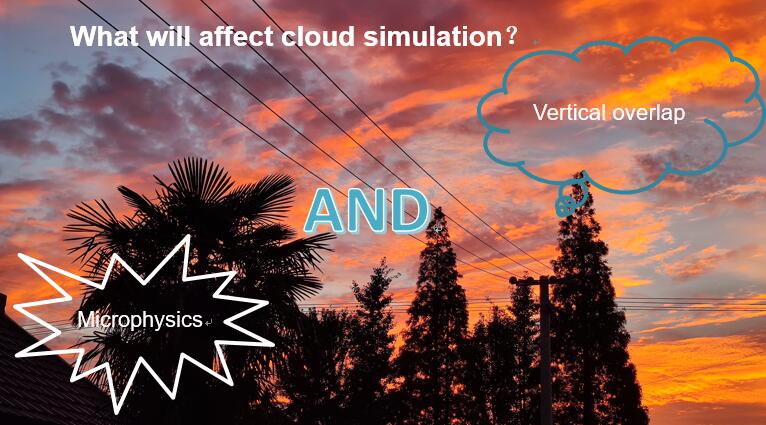Accurately simulating cloud-related variables within global climate models (GCMs), such as cloud fraction, is still a challenge for climate models. Cloud development occurs at multiple levels of the atmosphere, and they develop under many different conditions and microphysical processes.
To better predict cloud activity and to improve GCM accuracy, researchers from Chinese Academy of Meteorological Sciences and Institute of Atmospheric Physics of the Chinese Academy of Sciences analyzed a wide variety of microphysical properties that affect cloud development.
Their study was published in Advances in Atmospheric Sciences.
"A climate model is a vital tool for understanding the mechanism of climate evolution and predicting climate change. However, much uncertainty remains in model simulations." said Prof. ZHANG Hua from Chinese Academy of Meteorological Sciences, corresponding author of the study. "Clouds are one of the most crucial sources of such uncertainty. To improve simulation accuracy, cloud distribution and its radiative effects should be represented properly in models."
Her team used the BCC_AGCM2.0_CUACE/Aero model to estimate cloud fraction by simulating one-moment and two-moment cloud microphysics schemes along with observation-based and fixed vertical decorrelation length cloud overlap. Compared with the fixed decorrelation length method, the observation-based approach improved cloud fraction predictability both globally and within four representative regions.
"The representation of both cloud microphysics and the vertical overlap of fractional clouds influences the simulation of cloud fractions in GCMs, through modifications to microphysical processes and cloud geometry, respectively," said Prof. ZHANG.
Global climate models must consider microphysical processes and vertical overlap to accurately simulate clouds. (Image by WANG Haibo)
Utilizing a two-moment cloud microphysics scheme, on the other hand, improved the simulated cloud fraction compared with the one-moment scheme. The total cloud fraction bias decreased by 6.6% in the boreal winter and 1.64% in the boreal summer. Cloud radiative forcing was improved by 0.3%-1.2% and 0.2%-2.0% globally and in the four designated regions, respectively.
"Describing the vertical structure of clouds using vertical decorrelation length obtained from CloudSat/CALIPSO can improve the simulation of cloud-related variables in the BCC_AGCM2.0_CUACE/Aero, especially when two-moment scheme is used," said Prof. ZHANG. "Nevertheless, large regional biases in cloud fraction still exist, regardless of the cloud overlap and microphysical treatments, implying other underlying issues in the model."
In the future, efforts should focus on providing a more realistic representation of the spatiotemporal variation in cloud overlap in the model, and studies should also address other associated issues including simulating radiation budget variations, according to Prof. ZHANG.





